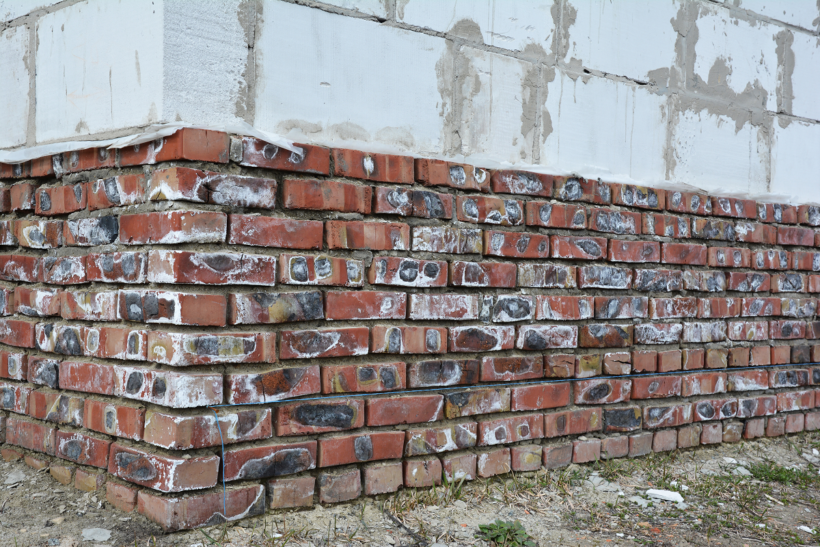If you’ve ever wondered what that white powdery stuff is on your chimney or house, you may be surprised to find out it has a name: efflorescence. This substance is a crystalline deposit commonly found on masonry products and is completely removable. With the right cleaner, getting rid of brick efflorescence is only a brush and a power wash away.
What exactly is efflorescence?
Efflorescence occurs when there is water present on surfaces such as brick, concrete, stone, and other masonry. This water seeps through small pores (cracks or fractures) within the material and combines with the already existing salts present. The water eventually evaporates, causing these salts to crystallize and leave behind a white or yellowish powder along the surface.
Since water is the key ingredient in this formation, the more moisture that there is in the air, the more likely it will occur. For this reason, buildings in humid climates or areas that experience lots of rain and snow are more prone to efflorescence than those that don’t experience these conditions. Though generally found on the exterior of homes and other buildings, this process can take place on the interior along walls and floors if water and a high amount of humidity are present.
Home construction is a popular time for this formation. Leaving masonry units outside and uncovered increases the possibility of water exposure and the formation of efflorescence.
How can I prevent it?
Although it may be inevitable for those that live in wetter climates, there are some ways to be proactive:
- Don’t aim sprinklers directly at the building or masonry surface.
- Isolate masonry units by storing them in a dry area—always cover them when not in use.
- Ensure proper drainage in and around your home or building.
- Add consolidated grout to your brickwork. This will decrease the size of the pores and discourage the invasion of water.
- Apply a water-repellent surface sealer.
It is important to note that before applying a sealant to the surface, the surface must be properly cleaned and void of any unwanted dirt, grime, and other substances.
How can I remove it?
Although tedious, removing brick efflorescence is an easy fix. Identifying how long the substance has been there and the quantity of it will help you decide which approach to take. Always follow recommended safety guidelines when handling all chemicals and tools.
Approach #1: Scrub it away
- If it is relatively new and not abundant, a heavy-duty scrub brush may work to remove the film from the surface.
- Scrub the surface with the brush. No water is needed if it is only present in a small area.
Approach #2: Pressure Wash
- If the build-up covers more than a small area, then pressure washing will be the best form of action.
- Start by wetting the surface and applying a specific masonry cleaning chemical designed for efflorescence deposit removals.
- After the solution has been set, pressure wash the area in a high-pressure setting.
- Allow the surface 48 hours to dry before applying a sealer.
Looking for an efflorescence removal solution?
TidalWashers’ Tidal Efflorescence Eraser detergent will get rid of these pesky deposits without using any harsh acids. It cleanses, beautifies, and preps the surface for a sealant. Visit our website to learn more about this product or get in touch with one of our expert team members to find the best cleaning solution for you!

